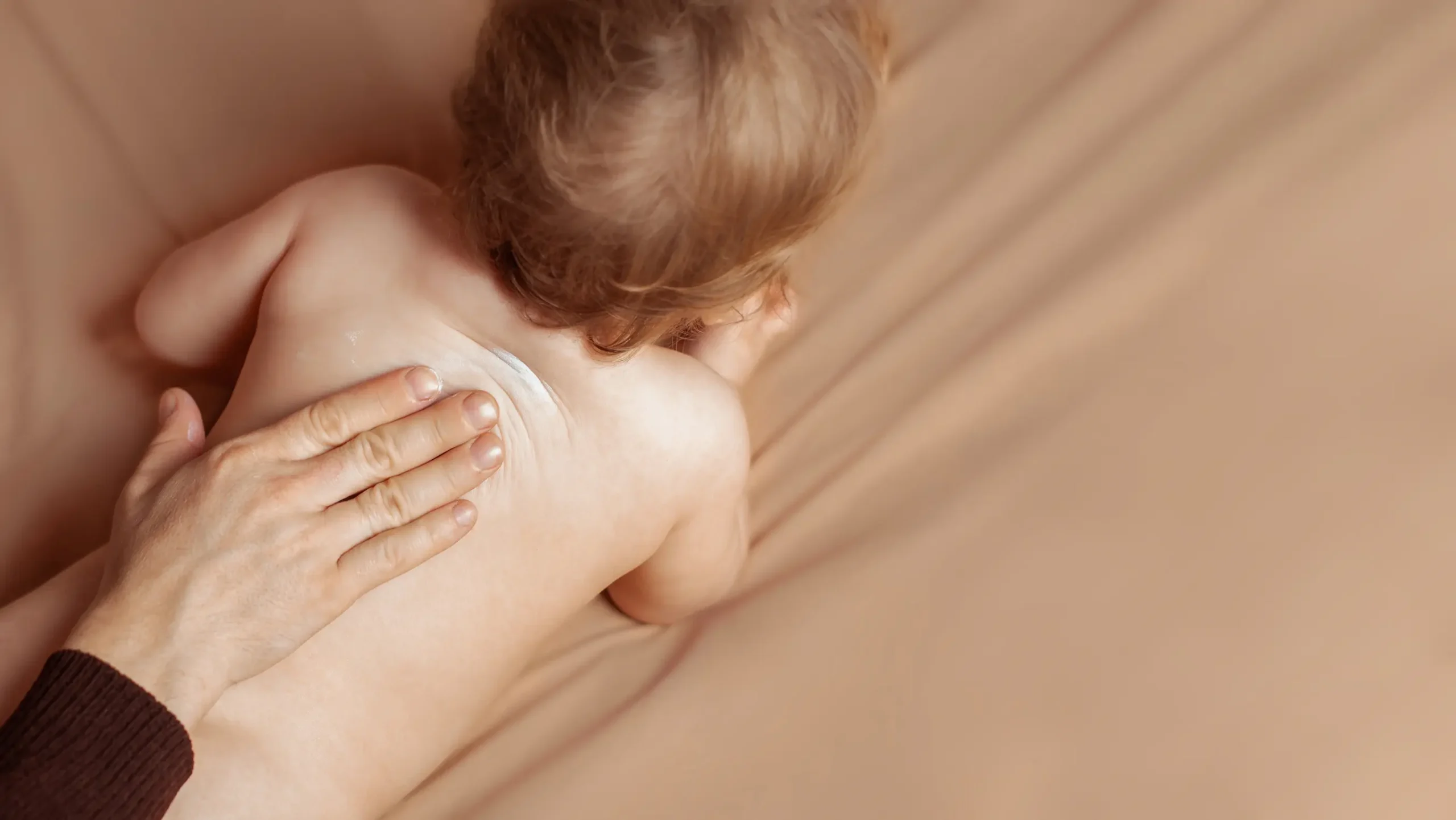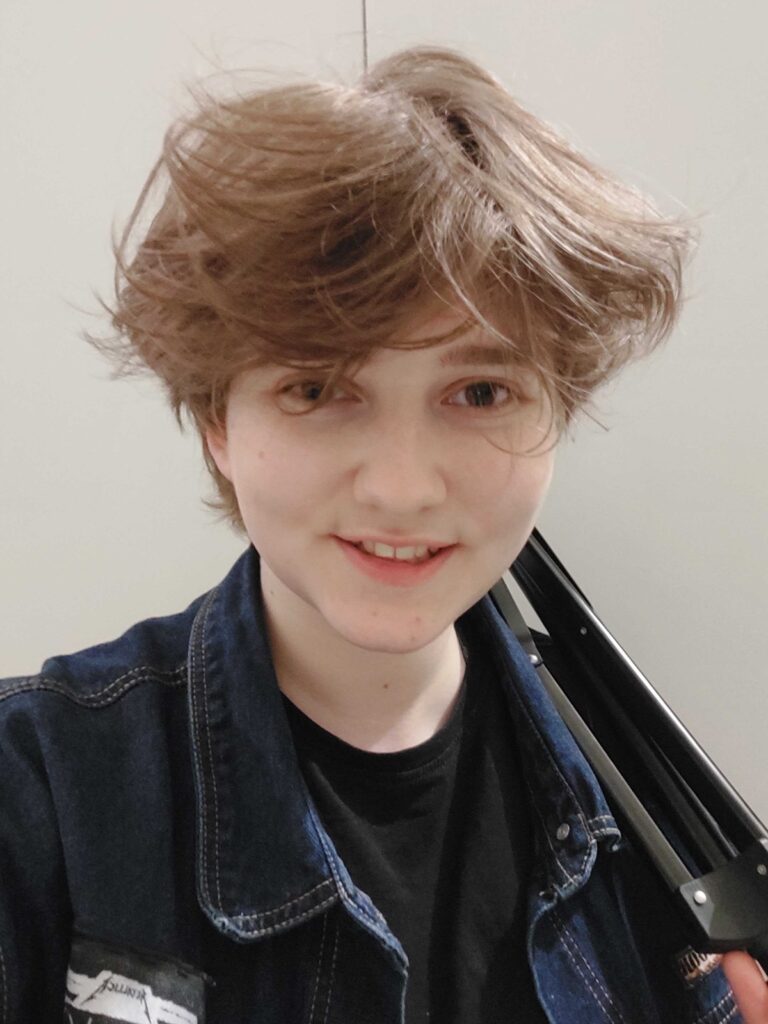
A baby’s skin is more fragile than that of an adult and may be prone to rashes. Sometimes, a bluish spot on the lower back of your child may appear. What is a Mongolian spot? Should you be concerned?
Mongolian spot in babies: let’s take a closer look.
What is a Mongolian spot?
A Mongolian spot is a pigmented mark, related to the pigments that color the skin, hair, and also determine your baby’s eye color. It is a common (and harmless!) phenomenon characterized by a bluish or grayish discoloration of the skin, mainly located on the lower back or buttocks.
These spots are the result of an accumulation of melanin (the pigments that protect from UV rays) in the epidermis, which distinguishes them from freckles or brown spots, which are caused by sun exposure.
Be careful not to confuse them with birthmarks. While both are present from birth, they are different in appearance and duration (Mongolian spots usually fade on their own, while birthmarks remain).
Good to know: these spots can vary in size and shape, but they are generally uniform in color.

Causes and predispositions
Not all babies develop Mongolian spots. Here are some factors that may influence their appearance.
Genetic factors
Melanin is one of the pigments that give skin its color, and its distribution can be determined by inherited genes. Indeed, skin pigmentation, including pigmented marks such as Mongolian spots, is often a familial trait. Genes play an essential role in determining skin color and can influence the appearance of specific marks.
Ethnic influence
These spots are more frequent in babies of African, Asian, Hispanic, and Native American descent. This prevalence can be explained by differences in melanin distribution and variations in the genes responsible for pigmentation. In addition, the spots are often more visible on darker skin, where melanin is naturally more concentrated.

Diagnosis of Mongolian spots
The diagnosis and identification of a Mongolian spot is carried out by a healthcare professional (usually a pediatrician, doctor, or dermatologist) as follows:
- Mongolian spots are often identified by their specific appearance, which differs from freckles or other pigmented marks. They are generally well-defined and uniform in color.
- Your healthcare professional also ensures that they are not another type of skin lesion, such as angiomas or signs of an underlying condition. For example, very large spots or those associated with vascular marks may require a more detailed examination to rule out conditions such as phakomatosis (a rare genetic disorder).
Want to learn more? Feel free to download the May app, where you’ll find plenty of resources to support and guide you throughout your journey as a new parent.

Differences between Mongolian spots and other skin marks
For comparison, here are some other common skin marks in babies:
- Angiomas: these red or pink marks are caused by a malformation of small blood vessels.
- Hemangiomas: appearing as small raised red marks, hemangiomas may grow during the first year before naturally regressing.
- Toxic erythema: this rash appears as red patches and is common in newborns. It is completely harmless and disappears spontaneously in a few days.
- Freckles and brown spots: although rare in newborns, these spots often appear later and are caused by sun exposure.
Here is a summary table:
| Type of mark | Color | Common location | Evolution | Treatment needed |
| Mongolian spot | Blue/gray | Lower back, buttocks | Fades naturally | No |
| Angioma | Red/pink | Face, nape of the neck | May fade or persist | Sometimes (laser) |
| Hemangioma | Raised red | Anywhere on the body | Regresses over several years | Rarely |
| Toxic erythema | Red | All over the body | Disappears in a few days | No |
Although most of these marks are harmless, it is important to consult a dermatologist if you have concerns, especially if a mark has unusual characteristics or is associated with other skin lesions and/or symptoms such as fever.
 Health impact and medical follow-up
Health impact and medical follow-up
As mentioned throughout this article: although these marks may worry parents, they are actually completely harmless and have no impact on your baby’s health. Note that a Mongolian spot generally fades naturally and spontaneously, usually disappearing completely by around age 5.
That said, it is advisable to pay attention to the following points:
- If the spot is particularly large or accompanied by other symptoms or skin lesions, it is recommended to consult a dermatologist to rule out any underlying medical condition.
- During your child’s routine medical check-ups, inform your doctor or pediatrician about these marks so they can monitor their evolution and ensure they fade normally.
And of course, if you have doubts or concerns, do not hesitate to consult your healthcare professional.
A Mongolian spot is therefore a benign skin mark caused by the accumulation of melanin in the epidermis. These spots fade naturally over time and usually do not require treatment, but a consultation with a dermatologist can be considered if they worry you or if they are associated with other lesions.

**
Photo credits: alexlucru123 | Vailery | setofotografias | ImageSourceCur | joaquincorbalan | thanyapatm
This text was translated from French by an artificial intelligence. The information, advice, and sources it contains comply with French standards and may therefore not apply to your situation. Make sure to complement this reading by visiting the May US/UK app and consulting the healthcare professionals who are supporting you.




